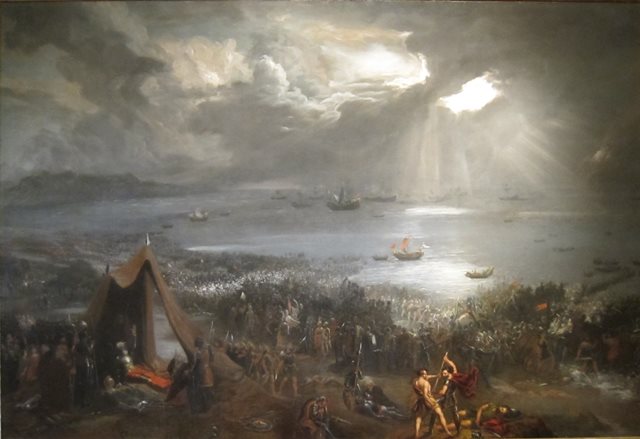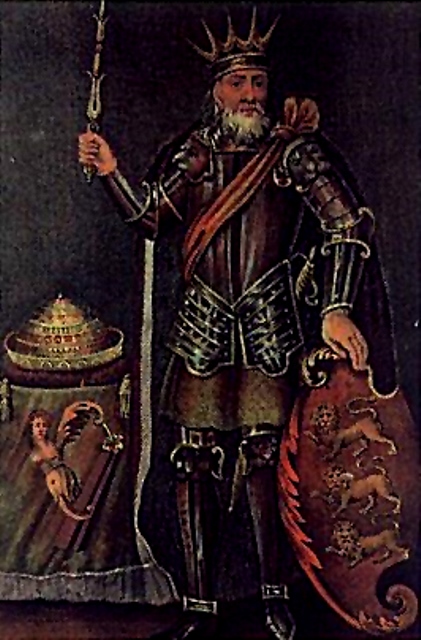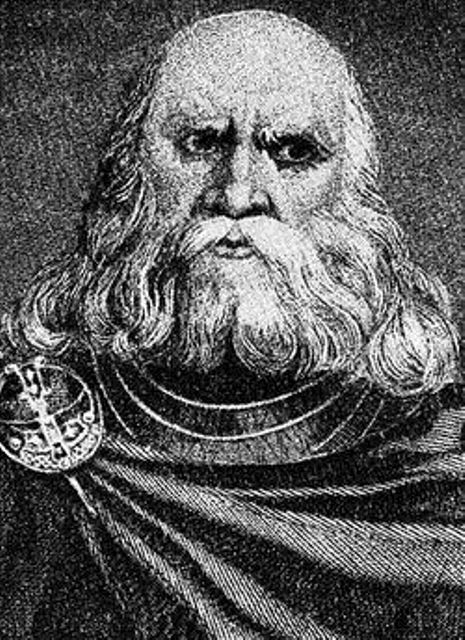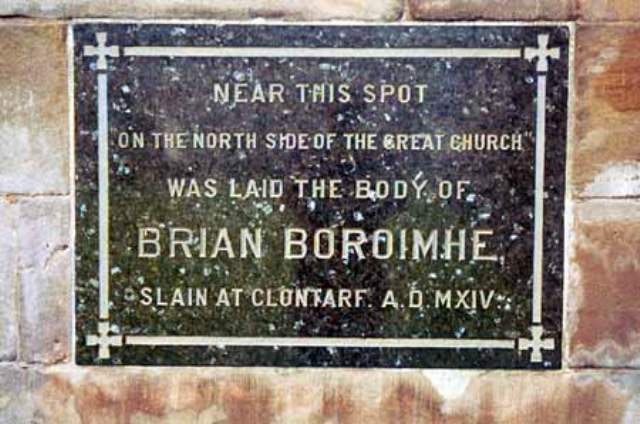Good Friday! Not so good for the Vikings…
Good Friday is a religious holiday observed primarily by Christians to commemorate the crucifixion of Jesus Christ and his death at Calvary in 33AD. However in Ireland Good Friday is also remembered for another important event. Exactly 1000 years ago today the famous Battle of Clontarf took place just outside Dublin. Dublin was in fact a city founded by Viking settlers after they grew tired of raiding monasteries and sacking small villages. It became an important center of trade and commerce. There was at this time a long history of intermarriages between the North men and Irish, some had even fought alongside Brian in previous battles. But for many years though it was commonly believed that Clontarf was a battle between the good Christian King of Ireland and the evil pagan North men, or that the battle was a result of over two centuries of treachery, failed alliances and treaties between the Celtic Chieftains and the Norsemen. This however is a load of rubbish.
So let’s look at the facts behind this epic piece of Gaelic history. Brian’s aim was to unite all the warring Celtic kingdoms and unify the under one rule and one High King. Yes Brian Boru did in fact kick 50 shades of S##T out of the Vikings at Clontarf, but he also slaughtered many fellow Irishmen in the process. The blame for this rests directly with the king of Leinster Mael Mordha. After an agreed marriage between the families of Boru and Mordha failed to materialise, Mordha basically went rogue and joined forces with Sitric Silkbeard, the Viking King of Dublin. Together they attacked the lands of Mael Sechlainn whose kingdom was in Meath. This however was a huge mistake as there was a strong opposition to a Viking presence in Ireland especially in the southern province of Munster. Sechlainn then turned to his friend Boru for assistance.
This type of scenario was typical of the Irish whom constantly were at war with each other. In this instance the Vikings got dragged into the middle of an internal feud between the Irish clans and pais a heavy price for their involvement. Brian being the nice guy that he was, was only too happy to oblige and set off towards Dublin with an army of 4,900 battle ready troops made up of 2,000 Munster men, 1,400 Dalcassians (also Munster men), and 1,500 Connacht clansmen. Opposing them were Mael Mordha’s army of 4,000 Leinster men in addition to Sitric’s 3,000 Viking warriors, which included Vikings from both the Orkneys and the Isle of Mann.
Only a small segment of the battle was fought close to the seafront at Clontarf, the historic encounter on Good Friday, April 23rd, 1014 entered the annals as the Battle of Clontarf mainly because some 2,000 Vikings had by sunrise on that morning of April 23rd, landed in their longboats at Clontarf. As the two opposing armies faced one another that day the Vikings and the Leinster men were lined across the sloping plains bounded by the sea and the River Tolka, while King Brian’s army occupied the rising ground near Tomar’s Wood in Phibsboro. The most ferocious part of the battle was fought at ‘the Battle of the Fishing Weir’, which is close to the site of the former D.W.D. Whiskey Distillery on Richmond Road. Historic accounts of the battle also refer to the ‘savage encounters’ fought on the ‘Bloody Fields of Marino’ and what is today Phibsboro and Cross Guns.
The result was one of the bloodiest days in Ireland’s history and was a decisive victory for King Brian, although some 4,000 of his troops lay dead on the battlefield. In contrast some 6,000 Leinster men and Vikings were slaughtered including every single Viking leader. King Brian’s army drove the fleeing Vikings back towards the sea at Clontarf, an account of which is descriptively told in a translation from the Gaelic manuscript by J.H. Todd in ‘The Wars of the Gaedhil with the Gaill’, (London, 1867).
“It was at the full tide the foreigners came out to fight the battle in the morning, and the tide had come to the same place again at the end of the day when the foreigners were defeated; and the tide had carried away their ships from them, so they had not at last any place to fly to, but into the sea; after the mail-coated foreigners had all been killed by the Dal Cais….and the foreigners were drowned in great numbers by the sea, and they lay in heaps and in hundreds.”
Even though Brian had just won probably the greatest victory of his long career, he did not live long enough to enjoy it. As he knelt praying in his tent near Cross Guns, a sneaky bastard Viking known as Brodir, whom had been hiding in the nearby woods, ran into the tent of the victorious King slaying the 84-year-old Brian with his axe. Brodir was later captured and slaughtered by another badass warrior, Wolf the Quarrelsome, the younger brother of King Brian. Little Wolfie is said to have gone berserk upon the news of his big brother’s death and began a campaign of slaughter against any remaining Norsemen he could find. The battle did lead to an time of peace between the two sides, with the Viking peoples themselves being absorbed into the Irish Culture.
Interestingly I recently found out that my mother’s family O’ Conaing/ Gunning’s, who belonged to the Dalcassian (DalgCais) clan, are descendant from a brother of Brian Boru, but more about that another time. There are numerous events planned around the country to commemorate this historic event. Full details can be found at http://www.brianborumillennium.ie/. Perhaps I may see you there 🙂









Great article Eddie, I never knew any of that..
LikeLike
Thank you, glad you liked it 🙂
LikeLike
Happy Friday!
LikeLike
🙂
LikeLike
well i feel a little less stupid now 🙂 thanks for the article, it was quite interesting and how amazing is your family tree! i’m looking forward to you covering this week-end’s events, i couldn’t make it myself but I’m glad now that I will vicariously experience them through your wonderful pictures!
LikeLike
Thank you, fingers crossed 🙂
LikeLike
Absolutely marvelous painted sky! One of the best I’ve seen. And a great blog too!
LikeLike
It should be, its over 200 years old, Glad you like it 🙂
LikeLike
Oh wow.. Nice history! I am reading a short introduction to the Vikings now
LikeLike
Cool, If you like it, try the Ragnar Lodbrok Saga, its a great read 🙂
LikeLike
Fantastic.!! I love Irish history and Viking history.!! The two combined made this post heaven.!
LikeLike
Great to hear, hopefully I’ll have some more if this weekend goes to plan, fingers crossed 🙂
LikeLike
My fingers are crossed too.!
LikeLike
So very interesting!!!
LikeLike
🙂
LikeLike
Ed – Just as a footnote to your Clontarf picture – I seem to remember having seen somewhere that many of the Vikings who survived Clontarf exiled themselves to the Wirrall Peninsula near Liverpool. Recent DNA studies in that area have confirmed this apparently. Des.
LikeLike
Wow, I didn’t know that, I taught that most of what was left got absorbed into the Irish culture. That must explain why the Scouser’s get such a bad name 🙂
LikeLike
Great to learn more,we vistied Dublin last year- now must ,must go back.Fascinating
LikeLike
Glad you liked it, watch out tomorrow for some pics of some real live Vikings 🙂
LikeLike
Great article ! Thanks for sharing witwh us.
LikeLike
My pleasure, glad you liked it 😃
LikeLike
Quite interesting to know!
LikeLike
Thank you 🙂
LikeLike
What a hell of a story. Badass indeed!
LikeLike
Pingback: Re-work Wednesday 18 | EdMooneyPhotography
Wonderful article Ed…especially love the personal connection! Can you give us more on this? You have quite an illustriuos heritage!
LikeLike
Thanks Ali,
It all came to light recently, my Mum is big into genealogy. So whilst she was telling me about her work tracing back her ancestors. I went right back and started working forward.
The Brian Boru connection is on my mothers side, Gunning or O’ Conaing who belonged to the Dalcassian (DalgCais) clan, descend from a brother of Brian Boru. Their territory (Thomand) comprised Co. Clare and parts of Limerick and Tipperary. The Gunning s held territory in Castleconnell, also called Castlegunning.
The Family name Mooney or O’Maonaigh go back even further and follow the line of Éiremhón one of the first Milesian Kings whom defeated the Tuatha Dé Danann. Interestingly his brother Éber Donn with whom he ruled Ireland with for a short while before killing him is responsible for the bloodline of Brian Boru.
Thats as far as I have gotten to date, but im sure there are volumes more to discover 🙂
LikeLike
Very interesting stuff – thanks for sharing!
LikeLike
Pingback: My Photoblog Adventure 2014, A year in review Part 1 | EdMooneyPhotography
Pingback: Guest Post | Combat in Medieval Ireland By Ed Mooney | aliisaacstoryteller